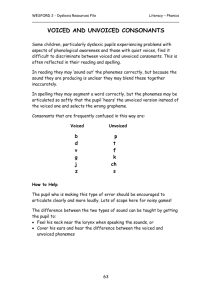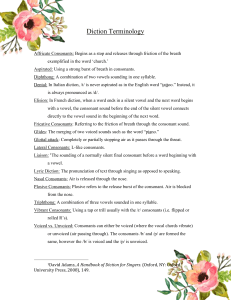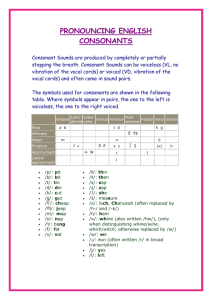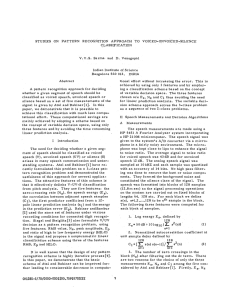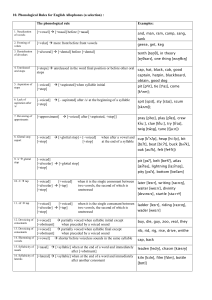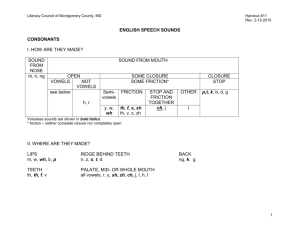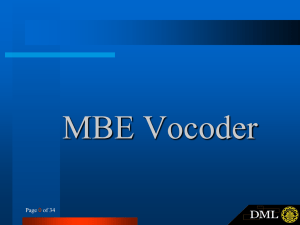Pronunciation Notes
advertisement
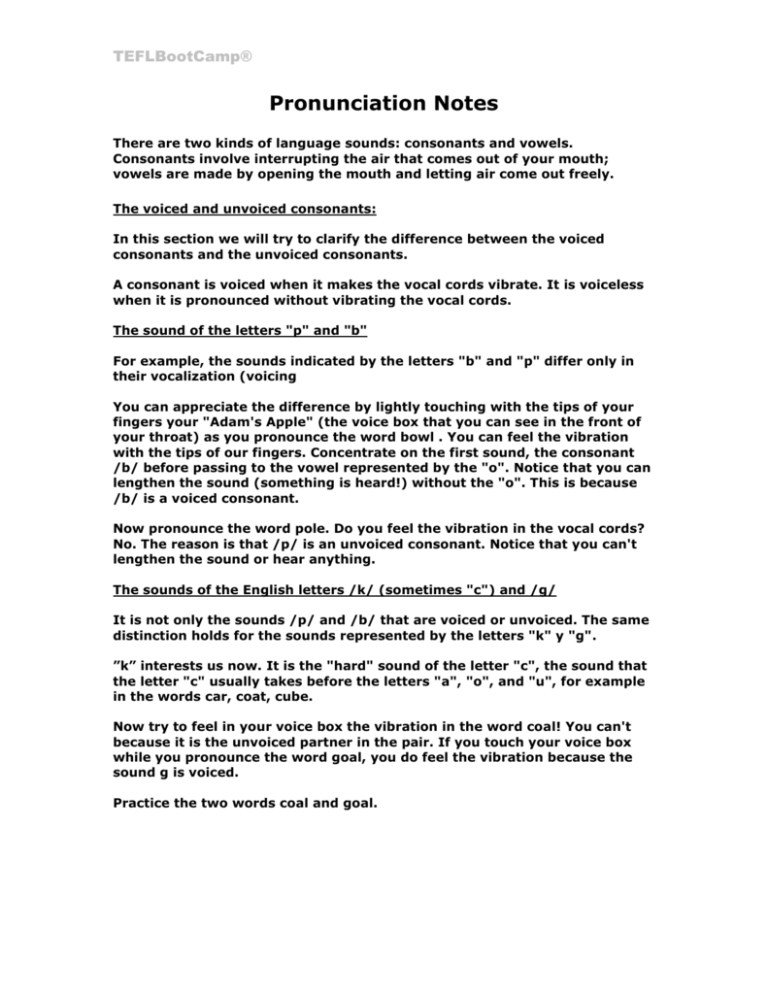
TEFLBootCamp® Pronunciation Notes There are two kinds of language sounds: consonants and vowels. Consonants involve interrupting the air that comes out of your mouth; vowels are made by opening the mouth and letting air come out freely. The voiced and unvoiced consonants: In this section we will try to clarify the difference between the voiced consonants and the unvoiced consonants. A consonant is voiced when it makes the vocal cords vibrate. It is voiceless when it is pronounced without vibrating the vocal cords. The sound of the letters "p" and "b" For example, the sounds indicated by the letters "b" and "p" differ only in their vocalization (voicing You can appreciate the difference by lightly touching with the tips of your fingers your "Adam's Apple" (the voice box that you can see in the front of your throat) as you pronounce the word bowl . You can feel the vibration with the tips of our fingers. Concentrate on the first sound, the consonant /b/ before passing to the vowel represented by the "o". Notice that you can lengthen the sound (something is heard!) without the "o". This is because /b/ is a voiced consonant. Now pronounce the word pole. Do you feel the vibration in the vocal cords? No. The reason is that /p/ is an unvoiced consonant. Notice that you can't lengthen the sound or hear anything. The sounds of the English letters /k/ (sometimes "c") and /g/ It is not only the sounds /p/ and /b/ that are voiced or unvoiced. The same distinction holds for the sounds represented by the letters "k" y "g". ”k” interests us now. It is the "hard" sound of the letter "c", the sound that the letter "c" usually takes before the letters "a", "o", and "u", for example in the words car, coat, cube. Now try to feel in your voice box the vibration in the word coal! You can't because it is the unvoiced partner in the pair. If you touch your voice box while you pronounce the word goal, you do feel the vibration because the sound g is voiced. Practice the two words coal and goal. TEFLBootCamp® The sound of the letters "t" and "d" Consider the pair of words tear and dear. Do the same with these words as you did above with the pairs of words coal and goal, and pole and bowl. Can you distinguish which of the initial sounds is voiced and which is unvoiced? Both are pronounced in almost the same place in the mouth but the initial sound of these two words is different in that the letter "t" is usually voiceless and the "d" is usually voiced. This difference between the letters "d" and "t" in English is very important in the matter of the past tense of verbs. We will treat this elsewhere. Also there is another pair of voiced and unvoiced consonants, the sounds represented in English by the letters "s" and "z". We will study them in their most important contexts, that of the third person singular of the present of verbs, and that of the plural of nouns. But for now, concentrate on the consonants we just looked at. Now listen and practice! Listen wherever you can (or listen in our book) to the different pairs of voiced and unvoiced consonants. Then make them yourself. P and B K and G T and D This lesson is taken from the book, “Word Power” and published at the University of Texas – Arlington – website: http://www.uta.edu/english/tim/courses/4301f98/2sept.html
